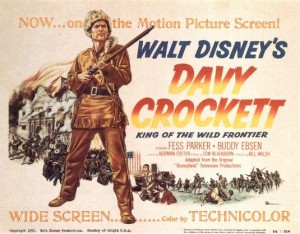 Next week’s reading assignment is James E. Crisp’s Sleuthing the Alamo. Before you jump to Chapter 1, be sure that you read “Pride and Prejudice: A Personal Prologue” (pp. 1-25). I think you’ll discover that every single one of you has something interesting in common with Dr. Crisp.
Next week’s reading assignment is James E. Crisp’s Sleuthing the Alamo. Before you jump to Chapter 1, be sure that you read “Pride and Prejudice: A Personal Prologue” (pp. 1-25). I think you’ll discover that every single one of you has something interesting in common with Dr. Crisp.
As you read the Crisp book, here are some questions to consider. You should write a response to one of these prompts in your Google Doc as usual.
- Why doesn’t Crisp think that “Anglo racism” is a sufficient explanation for the causes of the Texas revolution for independence? Do you agree with him that “racism” was not the “core explanation” (p. 45) of the Texas Revolution?
- Crisp believes, unlike Bill Groneman, that the De la Pena diary is both authentic and reliable. Do you agree on both counts? (Note that these debates attracted attention from national newspapers like The New York Times when they happened in 1998.)
- How did Davy Crockett die? (Be sure to use specific evidence and arguments from the book to support your answer.)
- Why do you think Crisp’s critics (discussed in Chapter 4) care so much about the way Davy Crockett died? Do you think it matters how he died? (Again, use specific evidence from the books to explain and support your answers.)
- In the afterword, Crisp discusses Michel-Rolph Trouillot’s theory that making history can be broken down into several “moments”: the creation of facts, the assembly of facts, retrieval of facts, and the delivery of facts. Does this view mean it is impossible for historians simply to get to “the facts” of the matter without their own perspectives getting in the way?
- Crisp begins and ends his book by talking about a family photograph that has been cut in half. He believes it is important to point out that figures like Juan Seguin and Jose Enrique de la Pena have been cut out, so to speak, of our pictures of the Texas Revolution. Should we put such figures back into the picture when we teach children about the Texas Revolution?
Image credit: “Crockett at the Alamo,” from The Idle Hour Book, or Scrapiana; Being a Nerve-Worker, Care Destroyer, and Genuine Countenance Disturber . . . Containing all the Information Necessary to Raise a Laugh at the Shortest Notice. . . . New York: Turner & Fisher, ca. 1848. Texas Collection Library, taken from this online exhibit about the De la Pena diary at the University of Texas. The whole exhibit is worth a look if you’d like to see some images and historical sources about the Texas Revolution, the Alamo, and the diary.


 Today in class we watched clips from
Today in class we watched clips from